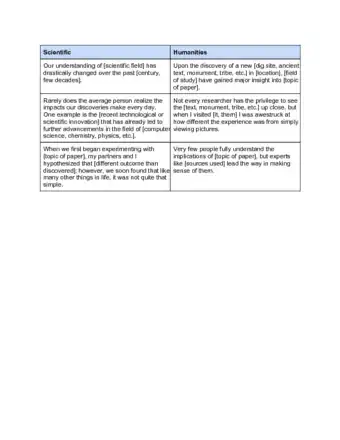This article was co-authored by Matthew Snipp, PhD and by wikiHow staff writer, Christopher M. Osborne, PhD. C. Matthew Snipp is the Burnet C. and Mildred Finley Wohlford Professor of Humanities and Sciences in the Department of Sociology at Stanford University. He is also the Director for the Institute for Research in the Social Science’s Secure Data Center. He has been a Research Fellow at the U.S. Bureau of the Census and a Fellow at the Center for Advanced Study in the Behavioral Sciences. He has published 3 books and over 70 articles and book chapters on demography, economic development, poverty and unemployment. He is also currently serving on the National Institute of Child Health and Development’s Population Science Subcommittee. He holds a Ph.D. in Sociology from the University of Wisconsin—Madison.
There are 8 references cited in this article, which can be found at the bottom of the page.
wikiHow marks an article as reader-approved once it receives enough positive feedback. This article received 30 testimonials and 92% of readers who voted found it helpful, earning it our reader-approved status.
This article has been viewed 662,663 times.
Publishing a research paper in a peer-reviewed journal is an important activity within the academic community. It allows you to network with other scholars, get your name and work into circulation, and further refine your ideas and research. Getting published isn’t easy, but you can improve your odds by submitting a technically sound and creative yet straightforward piece of research. It’s also vital to find a suitable academic journal for your topic and writing style, so you can tailor your research paper to it and increase your chances of publication and wider recognition.
Steps
Submitting (and Resubmitting) Your Paper
-
1Ask a colleague or professor to review your research paper. They should edit your paper for grammar, spelling errors, typos, clarity, and conciseness. They should also verify your content. Research papers need to present an issue that is significant and relevant. They should be clearly written, easy to follow, and appropriate for the intended audience.[1]
- Have two or three people review your paper. At least one should be a non-expert in the major topic — their “outsider’s perspective” can be particularly valuable, as not all reviewers will be experts on your specific topic.
-
2Revise your paper based on your reviewers’ recommendations. It is likely you will go through several drafts before final submission of your research paper. Give a special effort to make your paper clear, engaging, and easy to follow. This will greatly increase your chances of being published.[2]Advertisement
-
3Prepare your manuscript according to your chosen journal’s requirements. Format your research paper so it fits the guidelines for that publication. Most journals provide a document called "Instruction to Authors" or "Author's Guide" that offers specific instructions about layout, type font, and length. This guide will also tell you how to submit your paper and will provide details of the review process.[3]
- Journal articles in the sciences often follow a specific organizational format, such as: Abstract; Introduction; Methods; Results; Discussion; Conclusion; Acknowledgements/References. Those in the arts and humanities are usually less regimented.
-
4Submit your article when you feel it’s ready to go. Go to the Author's Guide (or similar) on the journal’s website to review its submission requirements. Once you are satisfied that your paper meets all of the guidelines, submit the paper through the appropriate channels. Some journals allow online submission, while others prefer a hard copy.[4]
- Submit your article to only one journal at a time. Work your way down your list, one at a time, as needed.
- When submitting online, use your university email account. This connects you with a scholarly institution, which adds credibility to your work.
-
5Don’t panic when you get the journal’s initial response. Very few article submissions get an immediate “Accept” reply from a peer-reviewed journal. If you do get one of these, go celebrate! Otherwise, calmly deal with the reply you get. It will likely be one of the following:[5]
- Accept with Revision — only minor adjustments are needed, based on the provided feedback by the reviewers.
- Revise and Resubmit — more substantial changes (as described) are needed before publication can be considered, but the journal is still very interested in your work.
- Reject and Resubmit — the article is not currently viable for consideration, but substantial alterations and refocusing may be able to change this outcome.
- Reject — the paper isn’t and won’t be suitable for this publication, but that doesn’t mean it might not work for another journal.
- When you're trying to publish a research paper, be patient, and be prepared to hear "no" a lot. There's a lot of vetting before a peer-reviewed article can see the light of day, because they have to be carefully scrutinized.[6]
-
6Embrace reviewer comments as constructive criticism. Quite often, you’ll be asked to revise your paper and resubmit it, based on the comments provided by several (often three) anonymous reviewers and the editor. Study their critiques carefully and make the necessary changes.
- Do not get over-attached to your original submission. Instead, remain flexible and rework the paper in light of the feedback you receive. Use your skills as a researcher and a writer to create a superior paper.
- However, you don’t have to “roll over” and meekly follow reviewer comments that you feel are off the mark. Open a dialogue with the editor and explain your position, respectfully but confidently. Remember, you’re an expert on this specific topic![7]
-
7Keep trying to get your paper published. Even if you are ultimately rejected by your preferred journal, continue to re-write your research paper and submit it to other publications.[8]
- Remember, a rejected paper doesn’t necessarily equal a bad paper. Numerous factors, many of them completely out of your control, go into determining which articles are accepted.
- Move on to your second-choice journal for submission. You might even ask for guidance on finding a better fit from the editor of the first journal.
Choosing the Right Journal for Submission
-
1Familiarize yourself with potential publications. Be aware of the research already published and the current questions and studies in your field. Pay special attention to how other research papers in your field are written: the format, the type of articles (quantitative studies versus qualitative ones, primary research, review of existing papers), the writing style, the subject matter, and the vocabulary.[9]
- Read academic journals related to your field of study.
- Search online for published research papers, conference papers, and journal articles.
- Ask a colleague or professor for a suggested reading list.
-
2Choose the publication that best suits your research paper. Each publication has its own audience and tone of writing. Decide, for instance, if your research paper would fit better in a journal that is highly technical and meant only for other scholars, or a journal that is more general in nature for a broader audience.[10]
- “Fit” is critical here — the most renowned journal in your field might not be the one best suited to your specific work. At the same time, though, don’t sell yourself short by assuming your paper could never be good enough for that top-shelf publication.
-
3Keep the circulation or exposure of the journal in mind. Once you’ve narrowed down your list of potential submission sites, do a little digging to find out how widely-read and widely-cited articles in those journals seem to be. Greater exposure for your work will be a definite benefit, especially when you’re trying to make a name for yourself early in your career.[11]
- However, always prioritize peer-reviewed journals — in which field scholars anonymously review submitted works. This is the basic standard for scholarly publishing.
- You can increase your readership dramatically by publishing in an open access journal. As such, it will be freely available as part of an online repository of peer-reviewed scholarly papers.[12]
Strengthening Your Submission
-
1Give your paper a clear vision. Good journal articles usually get straight to the point and remain there the whole way through. Establish what exactly your paper explores/investigates/accomplishes right from the start, and make sure that every subsequent paragraph builds on this vision.[13]
- Make a strong, clear statement of this vision in your thesis statement. Compare the following weak vs. strong statements:
- “This paper explores how George Washington’s experiences as a young officer may have shaped his views during difficult circumstances as a commanding officer.”
- “This paper contends that George Washington’s experiences as a young officer on the 1750s Pennsylvania frontier directly impacted his relationship with his Continental Army troops during the harsh winter at Valley Forge.”
- Make a strong, clear statement of this vision in your thesis statement. Compare the following weak vs. strong statements:
-
2Narrow your focus. Clear visions can also be grand visions, but journal articles don’t lend themselves to thorough examinations of large-scale topics. Scholars who are revising content from a thesis or dissertation often struggle with this element; you need to be able to strip away (or at least significantly dial back) things like background information, literature reviews, and methodological discussions for a journal article.[14]
- This is especially true for younger scholars who are breaking into the field. Leave the grand (yet still only 20-30 page) explorations to more established scholars.
-
3Write a top-notch abstract. The abstract is the first impression the reviewers will get of your work, so you need to make it count. Make sure there are absolutely no typos or unnecessary elements; you’ll only have around 300 words to work with. Be bold in your claims and original in your approach, but don’t over-sell what your article actually provides.[15]
- Your abstract should make people eager to start reading the article, but never disappointed when they finish the article.
- Get as many people as you can to read over your abstract and provide feedback before you submit your paper to a journal.
Research Paper Help
Warnings
- Do not immediately revise your paper if you are upset or frustrated with the journal's requests for change. Set your paper aside for several days, then come back to it with "fresh eyes." The feedback you received will have percolated and settled, and will now find a comfortable place within your article. Remember this is a big project and final refinements will take time.⧼thumbs_response⧽
References
- ↑ https://www.wlc.edu/uploadedFiles/Content/Academics/Student_Success_Center/ResearchPaper.pdf
- ↑ https://owl.excelsior.edu/research/revising-and-editing-a-research-paper/
- ↑ http://www.canberra.edu.au/library/start-your-research/research_help/publishing-research
- ↑ http://www.apa.org/monitor/sep02/publish.aspx
- ↑ http://www.apa.org/monitor/sep02/publish.aspx
- ↑ Matthew Snipp, PhD. Research Fellow, U.S. Bureau of the Census. Expert Interview. 26 March 2020.
- ↑ https://www.timeshighereducation.com/news/how-to-get-your-first-research-paper-published/2015485.article#survey-answer
- ↑ http://www.apa.org/monitor/sep02/publish.aspx
- ↑ http://www.canberra.edu.au/library/start-your-research/research_help/publishing-research
- ↑ http://www.apa.org/monitor/sep02/publish.aspx
- ↑ http://www.canberra.edu.au/library/start-your-research/research_help/publishing-research
- ↑ https://www.webarchive.org.uk/wayback/archive/20140615095526/http://www.jisc.ac.uk/media/documents/publications/briefingpaper/2010/bppublishingresearchpapersv1final.pdf
- ↑ http://www.apa.org/monitor/sep02/publish.aspx
- ↑ https://www.wlc.edu/uploadedFiles/Content/Academics/Student_Success_Center/ResearchPaper.pdf
- ↑ https://libguides.usc.edu/writingguide/abstract
About This Article
To publish a research paper, ask a colleague or professor to review your paper and give you feedback. Once you've revised your work, familiarize yourself with different academic journals so that you can choose the publication that best suits your paper. Make sure to look at the "Author's Guide" so you can format your paper according to the guidelines for that publication. Then, submit your paper and don't get discouraged if it is not accepted right away. You may need to revise your paper and try again. To learn about the different responses you might get from journals, see our reviewer's explanation below.















































































